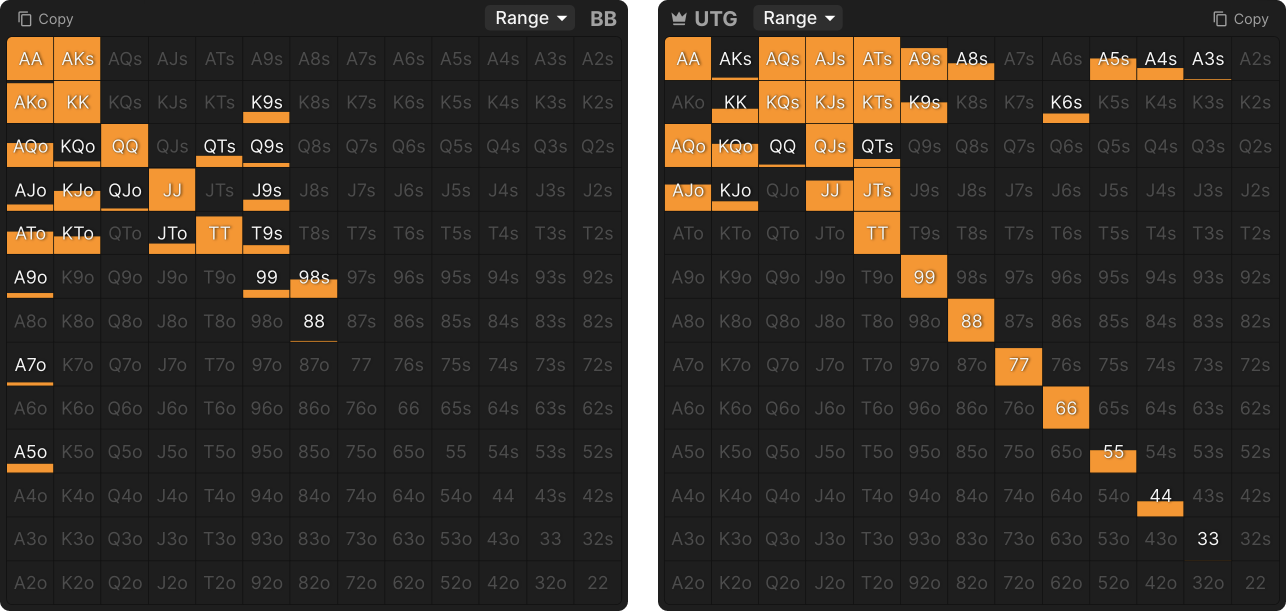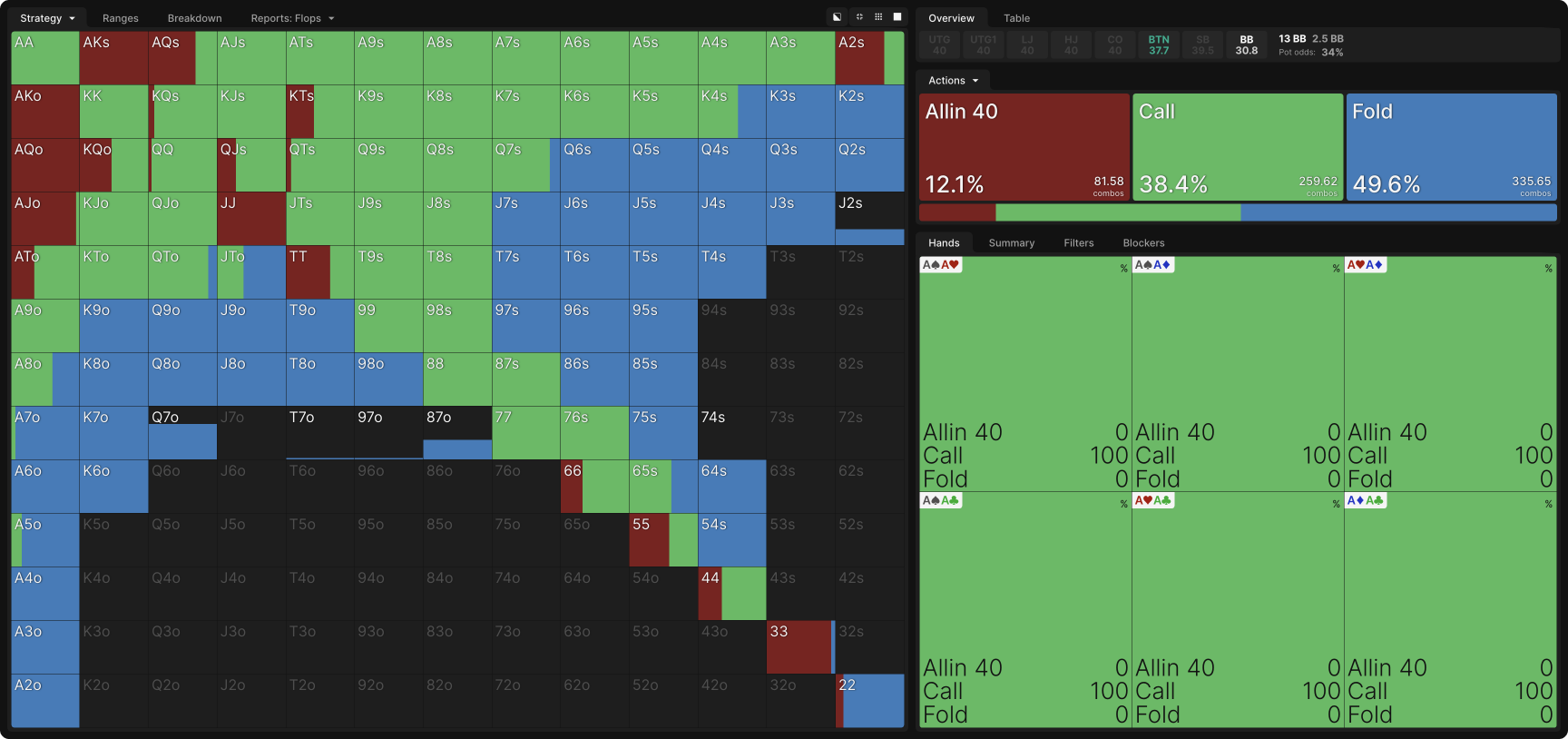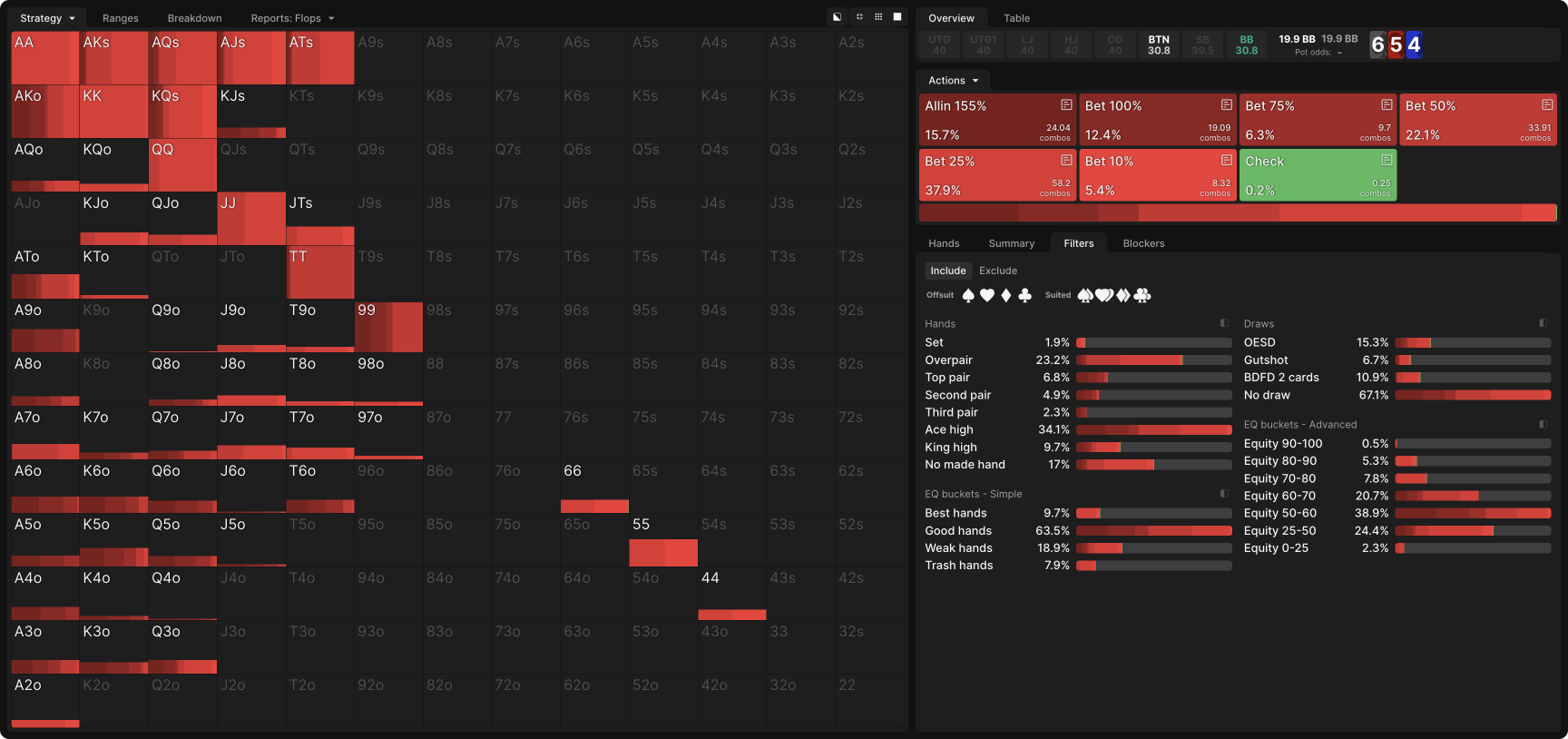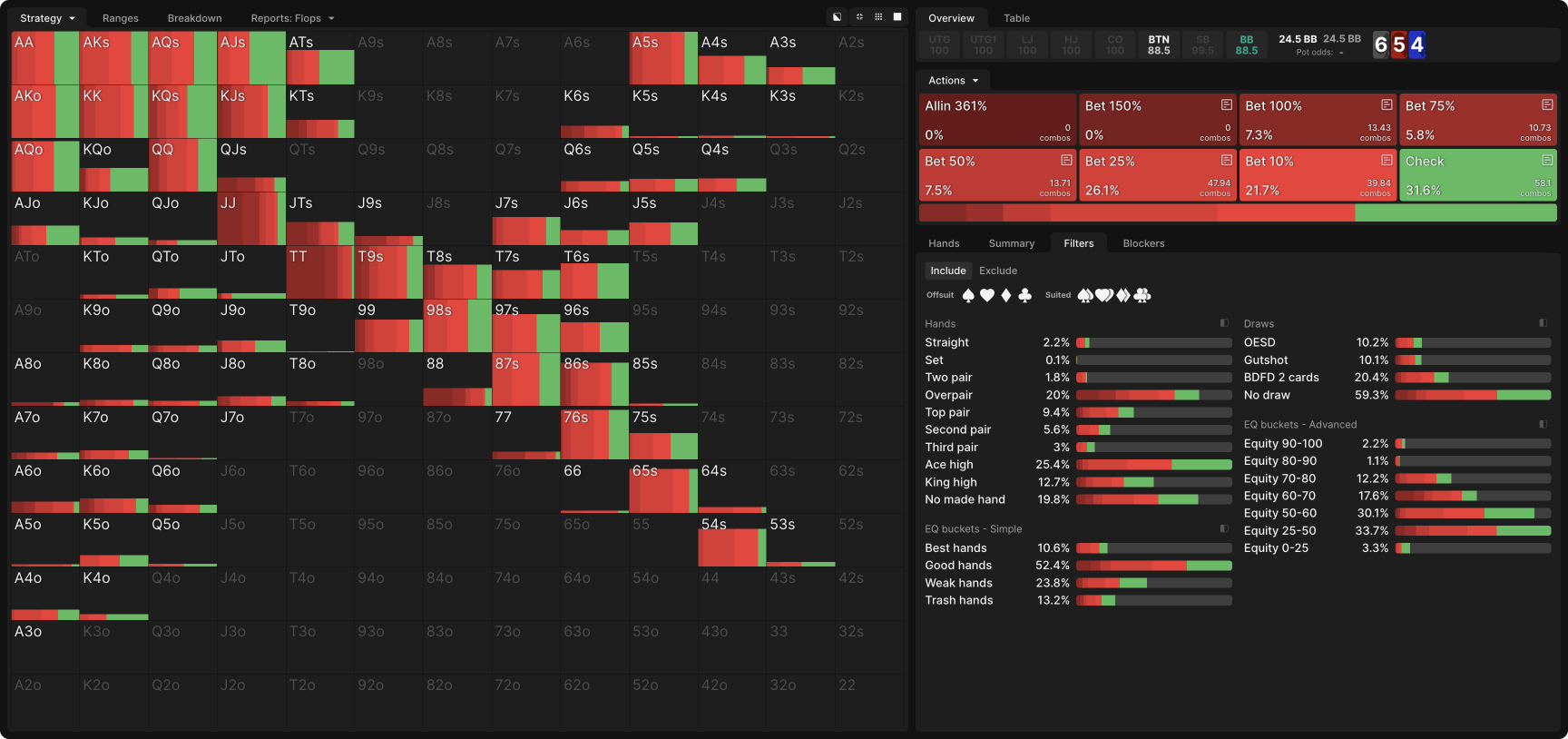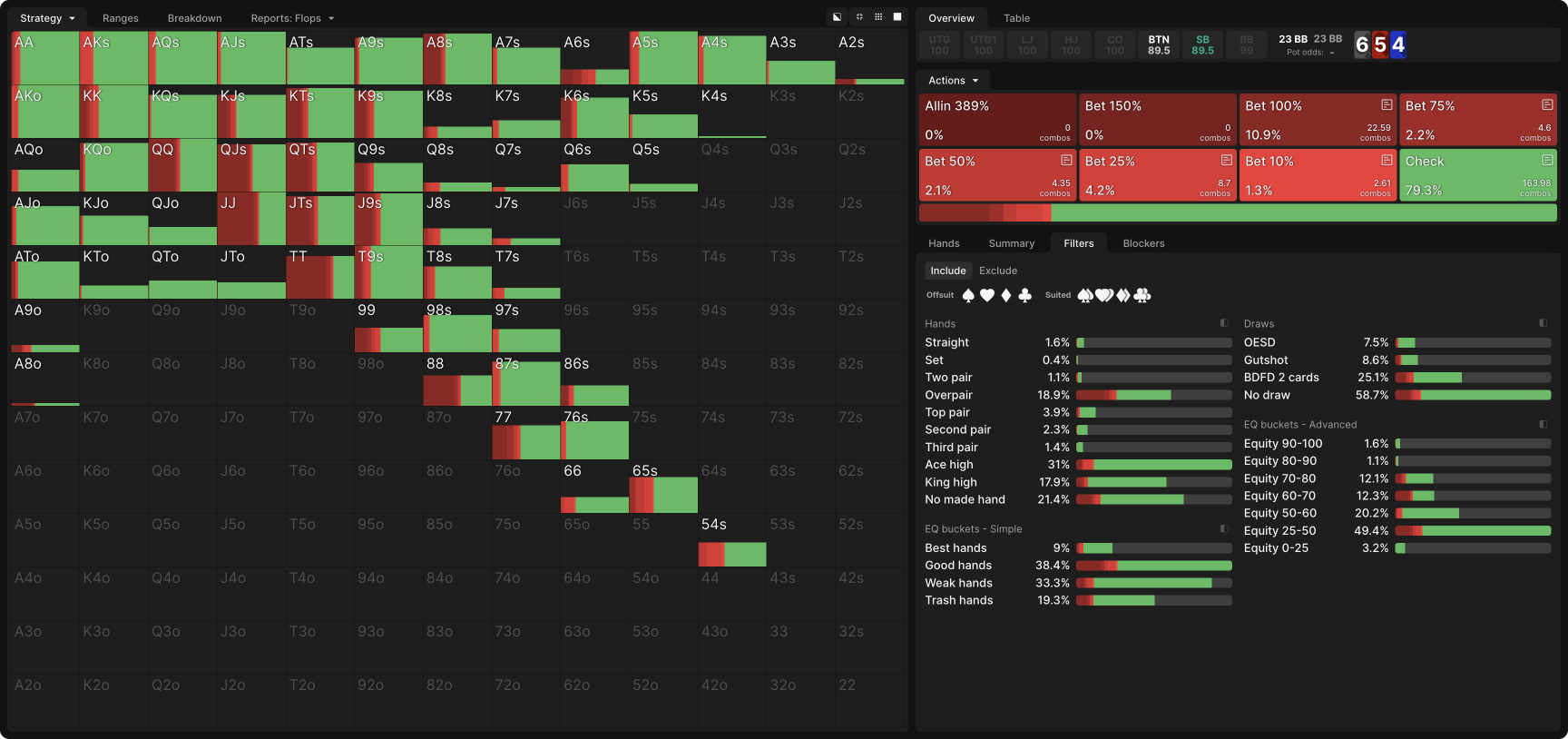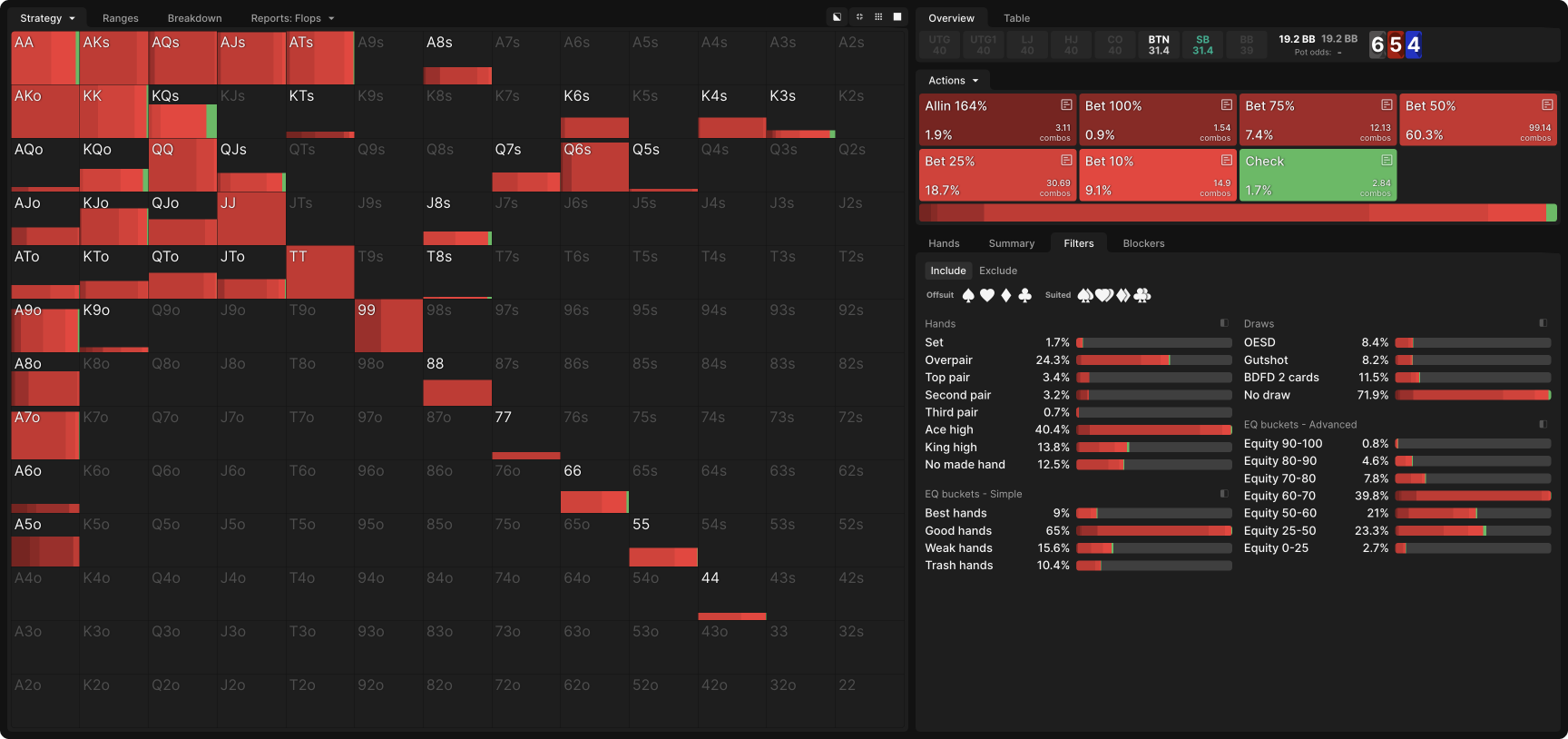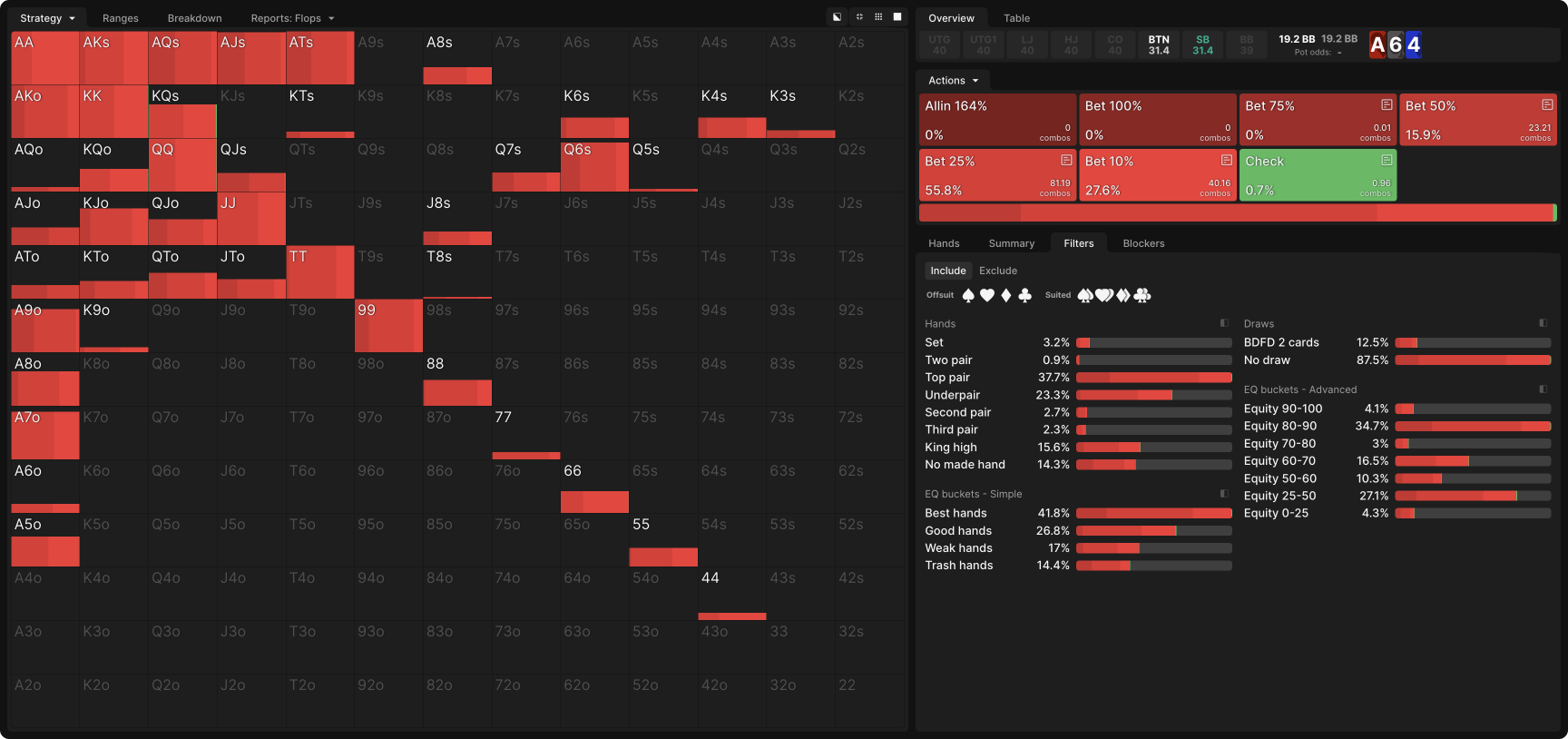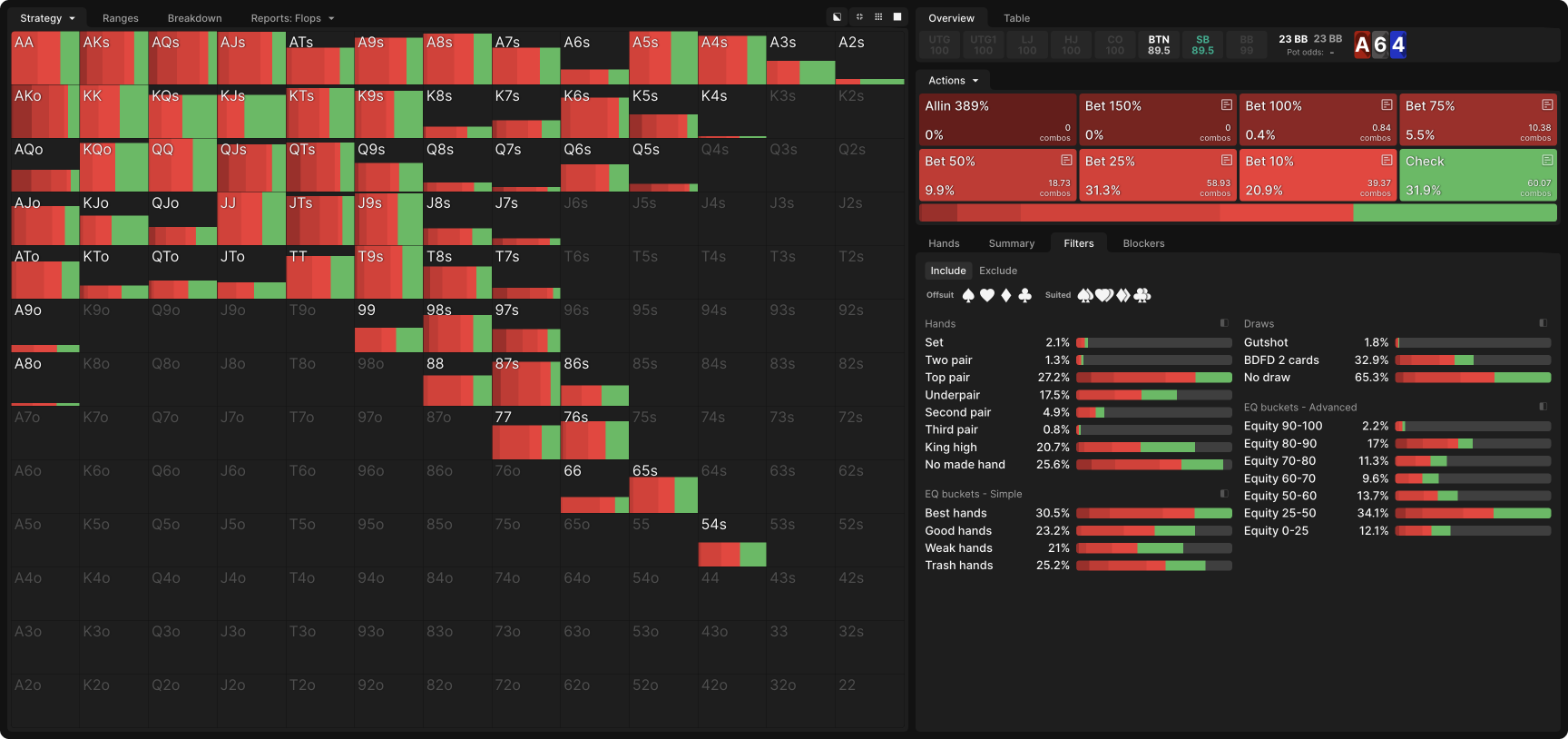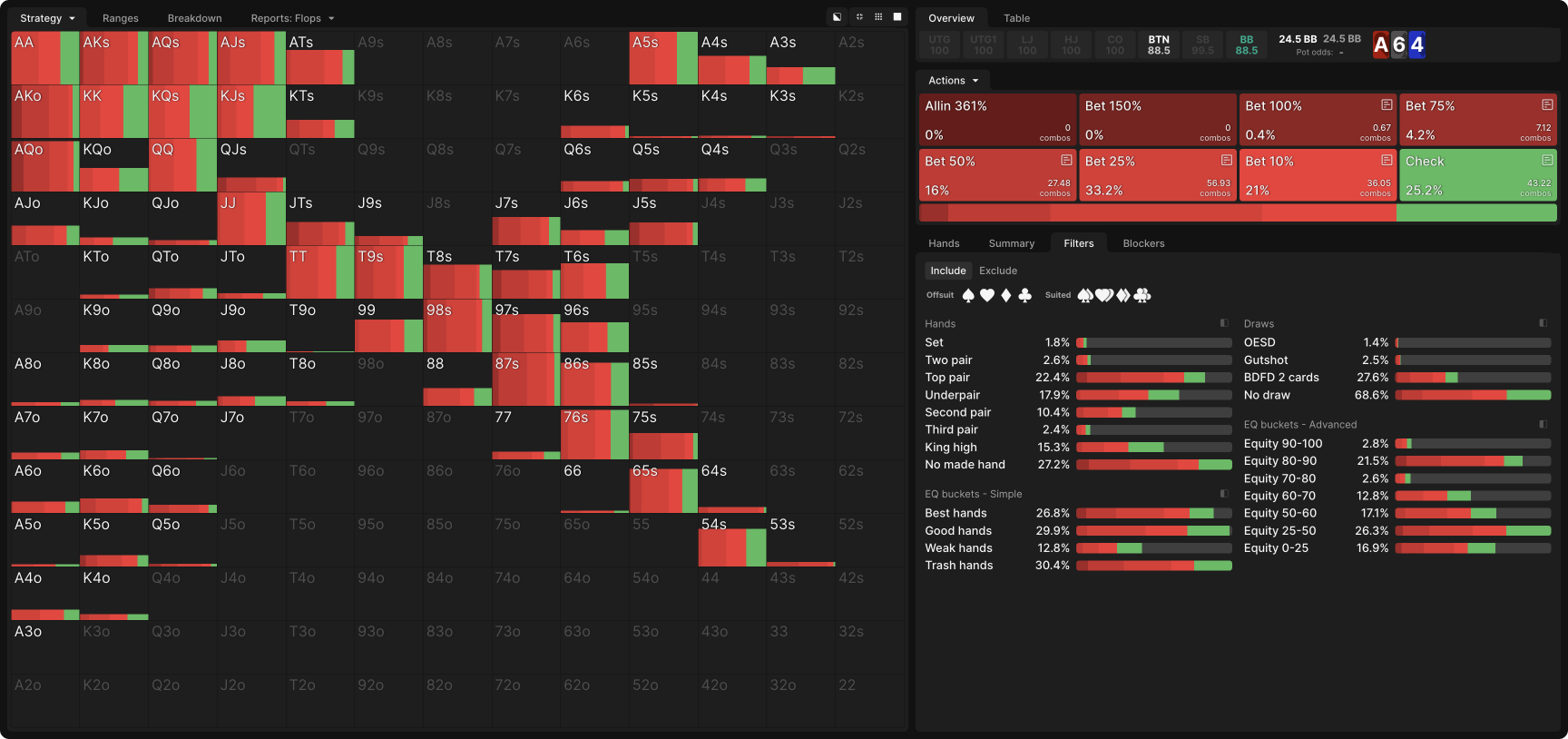C-Betting OOP in 3-Bet Pots

Continuation betting from out of position can be a dicey proposition in single-raised pots. Cold calling ranges tend to flop comparable equity to that of the preflop raiser, and position nudges the advantage to the caller on the average flop.
This is not the case in three-bet pots. Out-of-position three-betting ranges are stronger than the ranges that call them, and with a lower stack-to-pot ratioStack-to-pot ratio (SPR)
The effective stack divided by the size of the pot. SPR is commonly used to gauge the value of implied odds and the relative value of made hands., position is less important. Consequently, high continuation betting frequencies are typically correct even when out of position in a three-bet pot.
Still, there remains some important nuance around bet size, stack depth, and flop texture, which this article will explore in greater depth.
The Three-Better’s Range Advantage
To better understand the structural reasons for the three-better’s range advantage, consider a scenario where, with 40bb effective stacks, UTG opens for 2.3bb, BB three-bets to 9.2bb, and UTG calls. How much risk is each player taking on?
BB is investing another 8.2bb in the pot and is not closing the action. That means they are taking on the additional risk of a shove from the original raiser.
UTG, by contrast, is investing an additional 6.9bb in their call, which closes the action. The 2.3bb they invested in their initial raise now functions like a blind. It does not count toward the risk inherent in their call because it was already in the pot. They can call with weaker hands than BB can three-bet because they are getting a better price, closing the action, and guaranteed position after the flop.
Additionally, UTG is declining to four-bet. This does not literally “cap” their range – GTO Wizard recommends purely calling with AA in this scenario – but it does make strong hands less likely. Other very strong hands that are more vulnerable than AA, such as AK and QQ, have a lot of incentive to shove rather than take a flop.
Because the original raiser is getting a better price, closing the action, and guaranteed position after the flop, they can call with weaker hands than the blinds can three-bet.
This all adds up to the BB three-better having a stronger range than the UTG caller. In this example, BB has 54.4% equity to UTG’s 45.6%. The numbers will differ for different stack sizes and positions, but the underlying arguments remain the same. An out-of-position three-bettor should always have a stronger range than an in-position caller. Here we show UTG’s calling range facing a BB 3bet in a 40bb MTT:
The difference is even more pronounced when the three-bet comes from the SB, as they take on the additional risk of a cold four-bet from the BB. Consequently, a SB three-better in this same scenario would have 56.3% equity to UTG’s 43.7%.
Global C-Betting Strategies
With the three-better taking a significant equity advantage to the flop, we should expect to see frequent continuation betting, especially at low SPRs where their positional disadvantage is less pronounced. And indeed, that is what the data reveals.
The following chart shows the aggregate continuation betting strategies for different configurations. You can filter by stack depth!
What trends or patterns do you notice? We’ll discuss a few below, but first, take a moment to study the charts for yourself.
BB’s and SB’s strategies are similar in all scenarios, with BB constantly checking at a slightly higher frequency. BB’s c-betting frequency is lower than SB’s at most bet sizes, but the majority of their “extra” checks substitute for small bets. This makes sense, given our observation that SB should have a slightly stronger three-betting range. Consequently, they flop more equity on average and can use small bets to push that equity advantage with weaker hands than the BB can.
In all configurations, the out-of-position player continuation bets more frequently at lower stack depths. This also makes sense, as one risk of growing the pot from out of position is the difficulty of playing later streets. With shallower stacks, that is less of a concern. The diminished positional advantage also makes the in position player’s calls less valuable, yielding more immediate fold equity for even a small flop bet.
When the raise comes from later position, the opening range, the three-betting range, and the opener’s range for calling the three bet are all wider than when the open comes from early position.
Perhaps more surprisingly, both SB and BB continuation bet less frequently when the original raiser is in later position. It’s important to remember that although the original raiser starts with a stronger range when they are in earlier position, the three-betting player compensates for this by raising a stronger range. So, when the raise comes from later position, the opening range, the three-betting range, and the opener’s calling range are all wider than when the open comes from early position.
In fact, the later the original raiser’s position, the stronger their calling range is relative to the three-better’s range. This is why the Blinds continuation bet less aggressively when a late position opener calls their three-bet. In a 40bb scenario where BTN opens and calls a BB three-bet, they go to the flop with 47.4% equity, as opposed to the 45.6% we observed when their raise came from UTG. While UTG rarely traps with any pair other than AA, BTN pure calls AA, KK, and QQ:
Playing a Low Card Flop
654r is a good example of a flop where the blinds’ continuation betting strategy in three-bet pots varies dramatically with stack depth. With 40bb stacks, the SPR on the flop is roughly 1.5, enabling the out-of-position three-better to treat virtually any pair as the nuts.
This makes playing out of position relatively simple. More vulnerable pairs like K6 can just move all in, removing the need to play later streets at all. Stronger pairs can bet small, baiting the opponent into a bluff raise or float, against which they can continue to play as the nuts on many turns. Even when playing against BTN, BB has no checking range in this scenario:
With 100bb stacks, however, the SPR is higher than 4, which makes stacking off with weaker pairs a dicey proposition. Playing later streets in general will be more difficult, so BB makes much greater use of the Check and Bet 10% options to avoid growing the pot:
SB’s three-betting range is more linear than BB’s and so does worse with deep stacks on low card flops. With 100bb stacks, they check 79% of hands and bet pot with 10%. Their range for the latter is mostly polarized to strong but vulnerable overpairs and overcards with backdoor draws:
With 40bb, however, their strategy looks more similar to BB’s. There’s no shoving, but there’s no checking, either, and while they have fewer small pairs, they mostly bet big with the ones they have:
Conclusion
In three-bet pots, the re-raiser has a significant preflop equity advantage that enables them to continuation bet aggressively on most flops even when out of position. Indeed, thanks to the lower SPR, their position is rarely much of a liability. Only with very deep stacks does their disadvantageous position start to compel a checking range, and even then they profit from betting aggressively at all but the worst flops.
Author
Andrew Brokos
Andrew Brokos has been a professional poker player, coach, and author for over 15 years. He co-hosts the Thinking Poker Podcast and is the author of the Play Optimal Poker books, among others.
